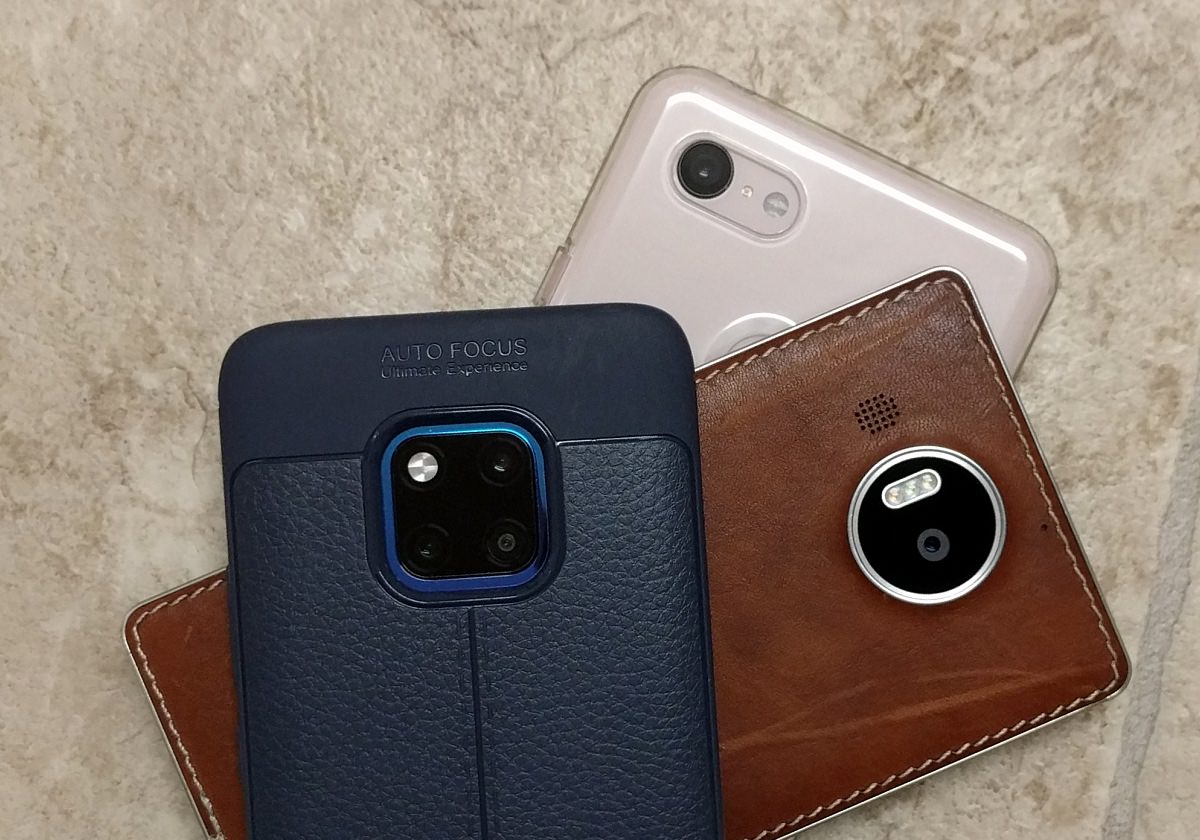
While Google has been experimenting more with reducing digital noise in the time (rather than physical) domain (PureView phase 2?) and trying to achieve zoom through (again) multiple exposure combination, using natural hand wobble, Huawei, under ex-PureView man Eero Salmelin's imaging leadership, brought back a slimline 40MP sensor, used in a new configuration, but allied to other cameras on the same device, notably a stabilised 3x telephoto lens. In theory giving two different ways of achieving zoom and, through clever algorithms, a genuine 5x 'hybrid' zoom.
The specs of the three phone cameras being compared below:
| Huawei Mate 20 Pro | Google Pixel 3 XL | Lumia 950 XL |
|
|
|
From this mass of imaging data, the Mate 20 Pro typically outputs 10MP images at 4:3 - there's a 18.8:9 aspect ratio option too, to match the phone's screen, but this is too wide for general use. To get 10MP shots from a 40MP sensor obviously needs some pixel combination, but it's done in a slightly different way to the original Nokia PureView system. Here, a 'quad-Bayer' arrangement means, as I understand it, that the colour filters in the 40MP sensor are in blocks of four, i.e. 2x2 grids of red, then the same for green and blue, etc. In good light, this arrangement can be filtered to provide an adjusted 40MP detailed photo, but most of the time, best results are by using each block of four as a single super-pixel, meaning great results in low light. And, when it comes to zooming, the same lossless zoom trick as from the PureView sensors can be used, so at least 2x genuine zoom, with colours at the pixel level constructed as needed.
The Google Pixel 3 XL concentrates its imaging prowess on software, taking up to 15 shots for every photo, all with short exposures, and then algorithms work out the best way to align and combine all of these according to subject matter and conditions - and it works remarkably well, as you'll see below. While the classic Lumia 950 XL uses PureView oversampling for all unzoomed shots, combining data from surrounding pixels to generate a 'pure' 8MP shot from the 20MP mass of original data.
A variety of techniques but, as you'll see below, results get very close at times - close enough that I'll be doing my usual 'pixel peeping'. Why look this closely? Here's why, in some detail!!
On with some tests then, I've chosen scenes to represent a wide range of subjects and lighting conditions.
Test 1: Sunny day
Perfect conditions and I expect perfect results from flagship phone cameras. Here's the overall scene:
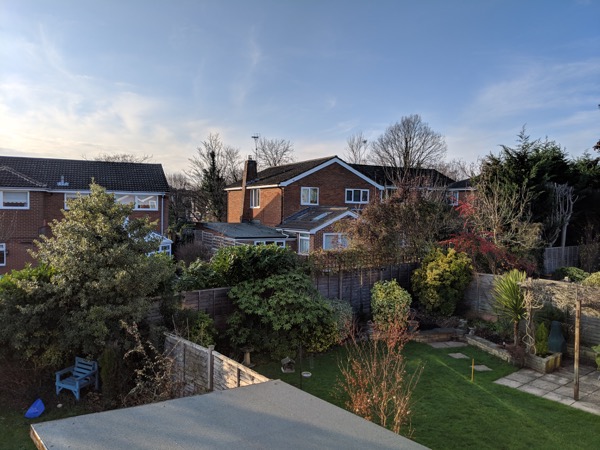
And here are 1:1 crops from the Mate 20 Pro, Pixel 3 XL, and Lumia 950 XL, in that order (click the device names to download the original JPGs for your own analysis):
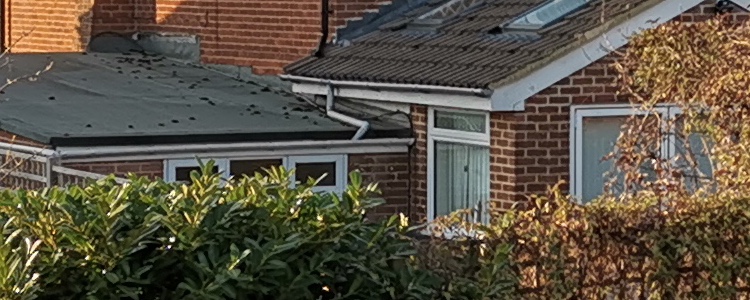
![]()

It's hard to split these photos - as you might expect, in such perfect light conditions the top camera phones have no trouble whatsoever - and the Mate 20 Pro, with its new '146' firmware, now has its edge enhancement firmly under control - thank goodness. Staring at the pixels, I do think the Lumia's shot is slightly better, but the margins are so small that I'm loathe to dock any points.
Mate 20 Pro: 10 pts; Pixel 3 XL: 10 pts; Lumia 950 XL: 10 pts
Test 2: Fine landscape detail
Weak winter sun and I was tapping to focus (and expose) on a distant tree against a bright patch in the sky. I've been concerned about zealous edge enhancement by the Mate 20 Pro in particular and the fine branches of the distant tree should be a good test. Here's the overall scene:

And here are 1:1 crops from the Mate 20 Pro, Pixel 3 XL, and Lumia 950 XL, in that order (click the device names to download the original JPGs for your own analysis):

![]()

The fine detail in the Lumia 950 XL's shot is astonishing, but the Mate 20 Pro and Pixel 3 XL aren't far behind and better than I've seen in the past from the competition. Edge enhancement is again under control and not too much detail is lost in the finer branches.
Mate 20 Pro: 9 pts; Pixel 3 XL: 9 pts; Lumia 950 XL: 10 pts
Test 3: Decent light, 2x zoom
Another test of capturing detail, this time with a pebbled church exterior with tree beside it, shot at about 20m. I also wanted to start playing with zoom, but at 2x the '3x lens' in the Mate 20 Pro can't be used, so it's reliant on 'PureView'-like digital zoom into the 40MP sensor. Here's the overall scene:
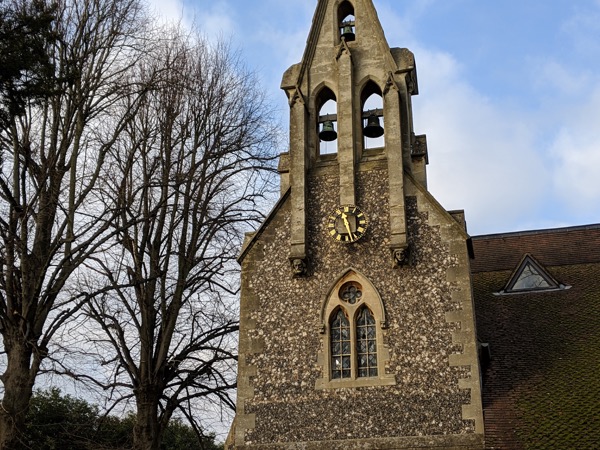
And here are 1:1 crops from the Mate 20 Pro, Pixel 3 XL, and Lumia 950 XL, in that order (click the device names to download the original JPGs for your own analysis):

![]()

We're now starting to see some differences - the Mate 20 Pro's focussing is not that sophisticated for subjects in the middle distance - there's just PDAF and laser autofocus, and the latter struggles beyond 10m, with the result that the Mate 20 Pro's shot looks a little 'out'. In addition, the PureView-like digital zoom isn't perfect, even though it should still be lossless at 2x, in theory. But at least sharpening hasn't been used to try and compensate.
The Lumia 950 XL shot is pretty good, despite '2x' involving part lossless zoom, part lossy, plus it's smitten slightly by the 'yellow cast' stick. While the Google Pixel 3 XL image is terrific - detailed, focussed, crisp, with the Pixel's 'Super-res-zoom' system combining multiple shots all naturally very slightly different in framing, to create an almost perfect 2x zoom shot.
Mate 20 Pro: 7 pts; Pixel 3 XL: 10 pts; Lumia 950 XL: 8 pts
Test 4: Maximum zoom
OK, let's go all-in on zoom, with a radio tower on a local ambulance station and some delicious detail against a bright-ish sky. Here's the overall scene:
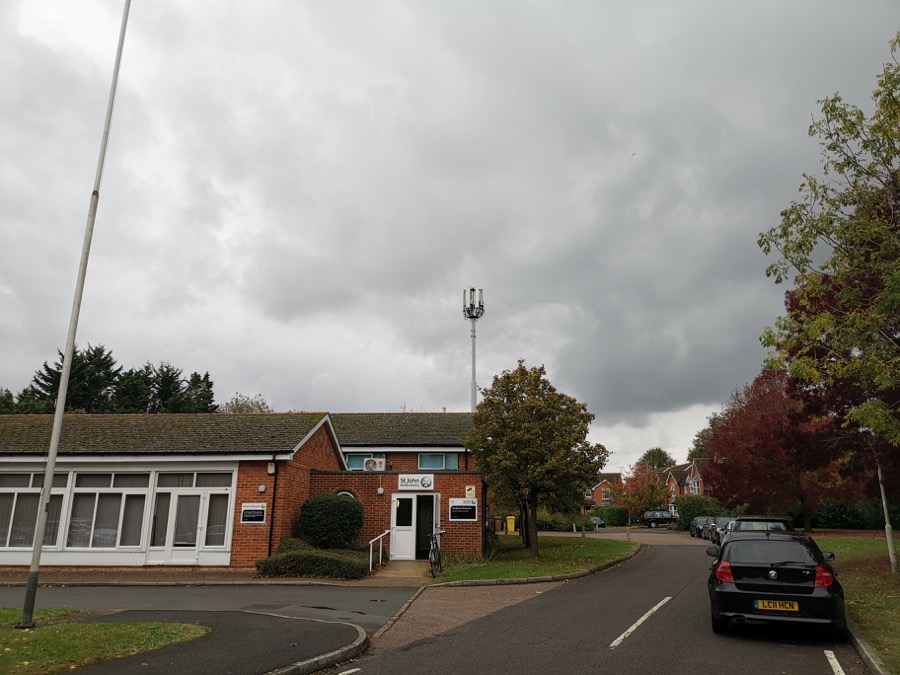
And here are 1:1 crops from the Mate 20 Pro, Pixel 3 XL, and Lumia 950 XL, in that order (click the device names to download the original JPGs for your own analysis):
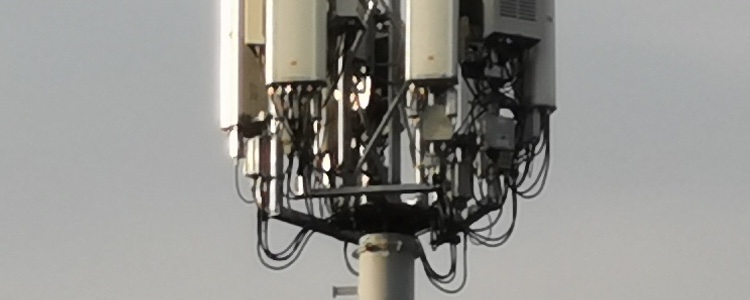
![]()
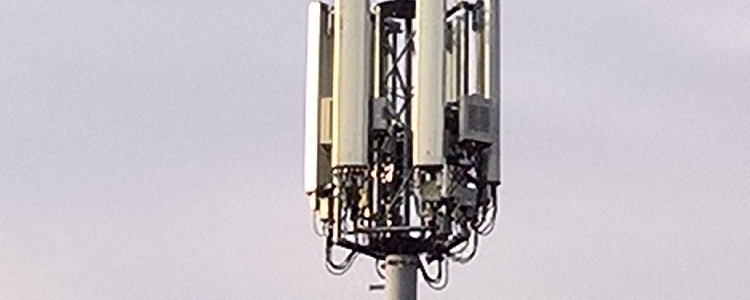
A clear win for the Mate 20 Pro here, unsurprisingly. The hybrid 5x zoom (3x optical, 2x digital from the main lens) produces stunning results and there are almost no artefacts. The Pixel 3 XL's multi-exposure Super-Res-Zoom system does very well considering the single 12MP sensor, but is clearly a few notches behind, and then the Lumia 950 XL's shot brings up the rear - zoom has never been the 950's string suit! A clear hierarchy when it comes to zoom then.
Mate 20 Pro: 10 pts; Pixel 3 XL: 8 pts; Lumia 950 XL: 6 pts
Test 5: Overcast detail
With the weather closing in, here's another sky shot, this time of a clock, and shot as-is, with no zoom. Plenty of detail to try and capture/render though. Here's the overall scene:

And here are 1:1 crops from the Mate 20 Pro, Pixel 3 XL, and Lumia 950 XL, in that order (click the device names to download the original JPGs for your own analysis):
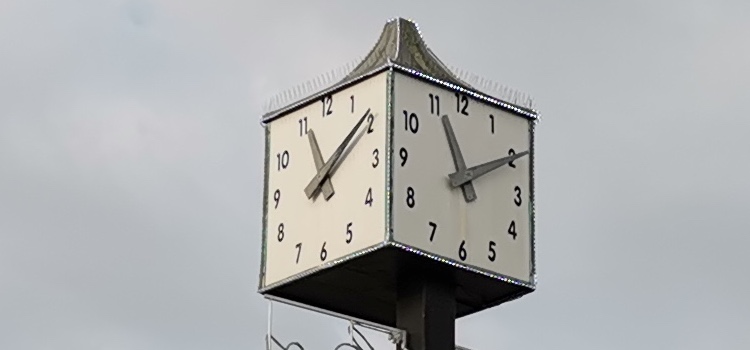
![]()
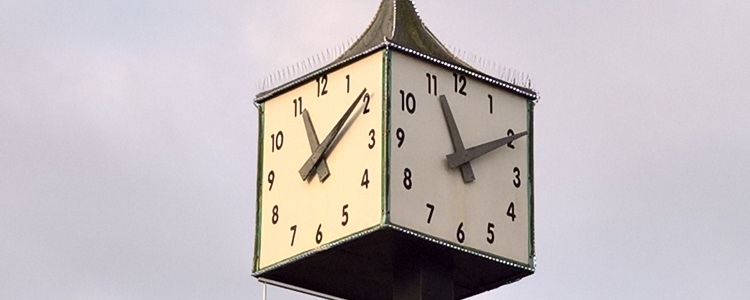
All three shots have admirable detail, but by the finest of margins the Lumia triumphs here. Look at the peripheral rows of tiny lights, especially on the right hand face, and you can see that the extra image processing (sharpening, edge enhancement) on the Pixel 3 XL and Mate 20 Pro merge more of the lights together, while the Lumia keeps them discrete. Does a very slight yellow tinge on the left face knock the Lumia down a notch? Not in this case, the sun was flitting in and out and I'm giving it the benefit of the doubt here.
Mate 20 Pro: 8 pts; Pixel 3 XL: 8 pts; Lumia 950 XL: 9 pts
Test 6: Macro time
Up as close as I could focus with all three smartphones, looking at ice crystals on some plastic popples. Here's the overall scene:
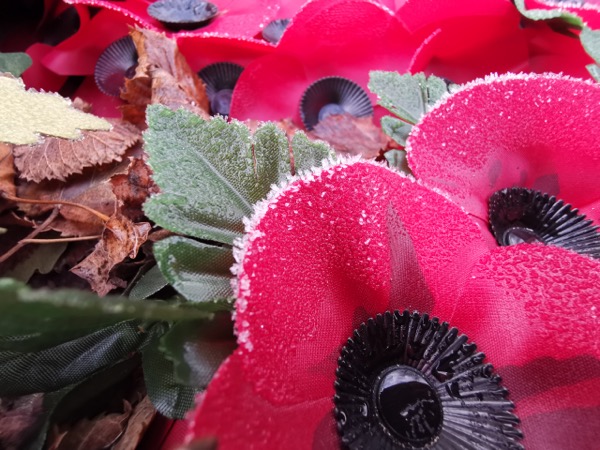
And here are 1:1 crops from the Mate 20 Pro, Pixel 3 XL, and Lumia 950 XL, in that order (click the device names to download the original JPGs for your own analysis):
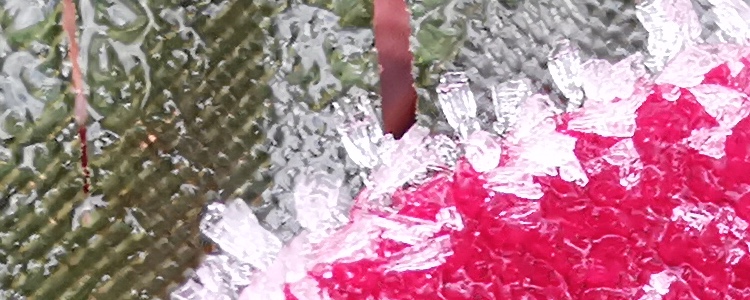
![]()
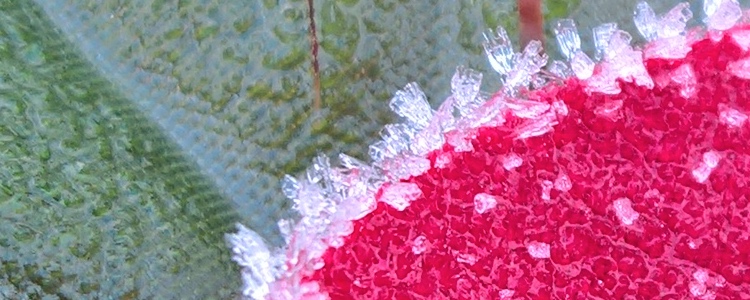
It's tough to compare these, not least because different techniques were used in each case, and because the exact centre of the 'depth of field' varied slightly. On the Mate 20 Pro I used the auto-focus wide angle lens, which Huawei shouted about as having the best macro facility in the world - it certainly got close, but I don't think results were better than on the other two smartphones here. The Pixel 3 XL complains if you try and focus too close and a warning pops up on screen that you need to move further back for reliable focus. Which is kind of it - and results are certainly super crisp. The Lumia 950 XL is right up there too, I think, with lovely bright colours.
All in all, I'm not going to call a winner here. The results are just... different.
Mate 20 Pro: 8 pts; Pixel 3 XL: 8 pts; Lumia 950 XL: 8 pts
Test 7: Portrait time
One of the staples of the modern camera phone scene, generating natural or artificial shallow depth of field to enhance a subject. Here are attempts to shoot a colourful post box on all three phones: the Mate 20 Pro, Pixel 3 XL, and Lumia 950 XL, in that order (click the device names to download the original JPGs for your own analysis):
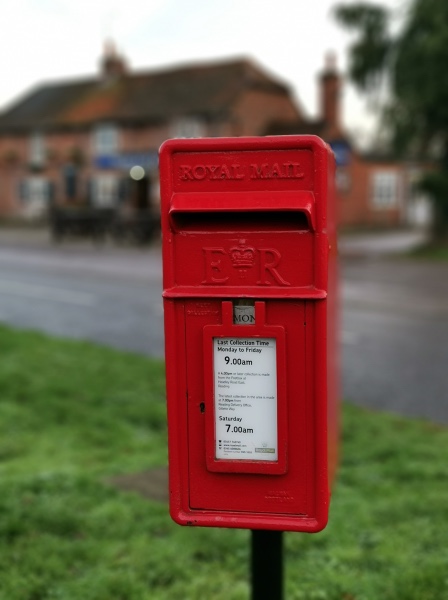
In 'Portrait' mode, the Mate 20 Pro complained (as an iPhone would do) that it couldn't find a face and therefore any 'Portrait' computational effects couldn't be achieved... However, as pointed out in the comments below, there's a partially hidden 'Aperture mode' that does work with objects, though you have to control the fake Depth of Field manually with a slider. Auto this ain't. It got there in the end though.
Note that this shot on the Mate 20 Pro was taken on a different day with slightly different lighting, so excuse any differences in colours and shadows.![]()
The Pixel 3 XL seems to be able to create a portrait effect from almost any subject, with only minimal artefacts, and all from a single lens. If you look at the right edges of the back of the postbox then you can see where things when slightly wrong, but it's still an impressive shot.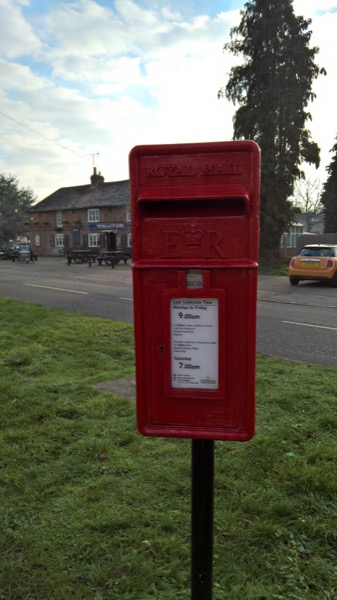
The Lumia doesn't have any fancy 'portrait' effects, of course, as it predates the modern trend. It matches the Mate 20 Pro for a little natural/optical bokeh, but that's as far as it goes.
The Pixel 3 XL benefits from Google's 'intelligence' in knowing roughly what the user is shooting and thus it can guess which edges to use and what to keep 'sharp'. The system is unparalleled, in my testing. A postbox, a cat, a pint of beer - whatever you try and create a 'portrait' of, it'll handle it and blur the rest in artistic fashion. Very nice. The Huawei Mate 20 Pro gets a similar result if you seek out its (slightly hidden) Aperture mode and then dive in manually to tweak the 'simulated aperture' slider, but it has to lose a mark for not just doing this automatically in 'Portrait' mode - it's all very confusing.
Mate 20 Pro: 9 pts; Pixel 3 XL: 10 pts; Lumia 950 XL: 7 pts
Test 8: Low light
A controlled shot in the warm, with just LED lights in a dark room and a framed painting. Here's the overall scene:
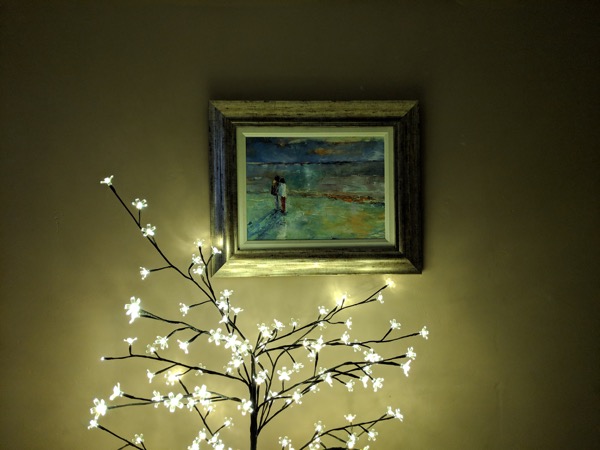
And here are 1:1 crops from the Mate 20 Pro, Pixel 3 XL, and Lumia 950 XL, in that order (click the device names to download the original JPGs for your own analysis):
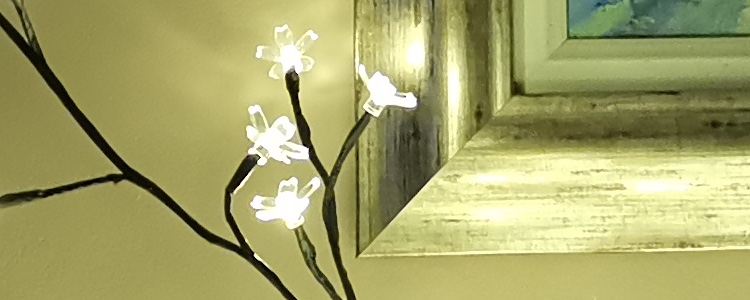
![]()
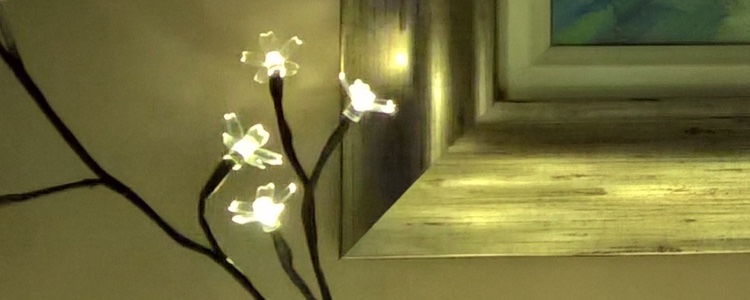
The Mate 20 Pro and Pixel 3 XL shots are almost identical, while the Lumia opts not to sharpen and enhance texture, plus it has arguably higher dynamic range. Which shot wins is down to personal preference, though I'm going to give an extra point to the Mate 20 Pro as it has marginally the brightest and cleanest wall and painting inner frame, good tests of handling of digital noise.
Mate 20 Pro: 10 pts; Pixel 3 XL: 9 pts; Lumia 950 XL: 9 pts
Test 9: Party time, LED flash forced on!
My traditional low light 'person' shot, with me (around 2 metres away) making no attempt to stay still and 'pose' (though without my bottle of beer!) In order to make things fairer, I gave each phone camera three goes at this (my daughter was the camera operator, so I was also eliminating user error and hand shake as far as possible!) and then took the best from each phone. Here's the overall scene:

And here are 1:1 crops from the Mate 20 Pro, Pixel 3 XL, and Lumia 950 XL, in that order (click the device names to download the original JPGs for your own analysis):

![]()

It's interesting that it's the Pixel 3 XL that gets the most usable face shot here, though in hindsight maybe this shouldn't be a surprise - the HDR+ system used in the Pixels works by taking a burst of very short exposures and then merging them intelligently - and in the case of movement (e.g. of a face), the crispness of one single short exposure is used as the basis for this section of the image. All very computational. The Lumia 950 XL does its usual blend of flash and non-flash shots, and ends up within a whisker of the Pixel's results, close enough to warrant the same mark, while the Mate 20 Pro falls a little behind with typical low light blur for a camera phone in low light with moving subject.
Mate 20 Pro: 7 pts; Pixel 3 XL: 9 pts; Lumia 950 XL: 9 pts
Test 10: Night time
Night time, very nearly completely dark, so I allowed 'Night' modes on the Mate 20 Pro and Pixel 2 XL - these use multiple exposures to gather and merge more light. Here's the overall scene:
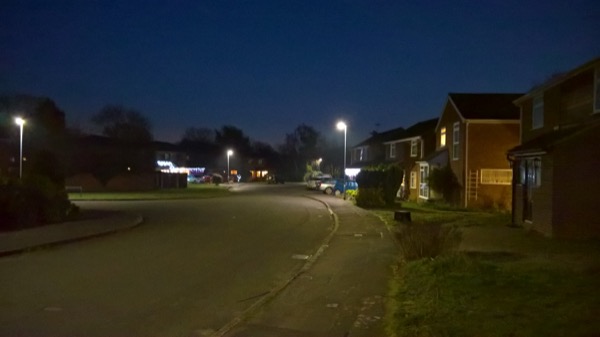
And here are 1:1 crops from the Mate 20 Pro, Pixel 3 XL, and Lumia 950 XL, in that order (click the device names to download the original JPGs for your own analysis):
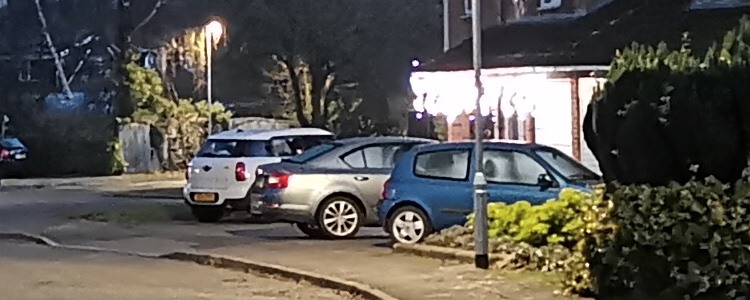
![]()
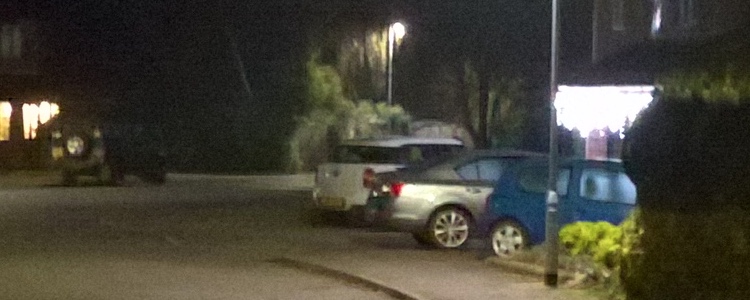
Low light focussing issues notwithstanding, the Lumia 950 XL camera is traditionally a night time king - and it's result here is already 'too light' in terms of representing reality. But the new multi-exposure modes from the other more modern flagships take 'turning night into day' to new levels. Artificially so, but hey....
The Mate 20 Pro's shot is brightest and crispest but edges are slightly too artificial and it also blows out bright lights, while the Pixel 3 XL gets a good balance of detail, natural results and dynamic range. While the Lumia works wonders from a single exposure and manages to stay comparable.
Which shot 'wins' is entirely down to what one prefers. The 950's is the closest to reality, the Pixel's is the best balanced, the Mate 20 Pro's is by far the brightest and clearest. So even scores all around and you can take your pick!
Mate 20 Pro: 9 pts; Pixel 3 XL: 9 pts; Lumia 950 XL: 9 pts
Verdict
So many scores above are so close that for most purposes a user would be happy with any of the three phone cameras in almost all conditions. But there has to be a winner, so let's add up the points, for interest sake:
- Google Pixel 3 XL - 90 pts/100
- Huawei Mate 20 Pro - 87 pts/100
- Lumia 950 XL - 85 pts/100
The all-computational approach from Google, allied to a decent modern stabilised sensor, wins out in the end, though the result was very much in doubt throughout.
Takeaways here include:
- Google's HDR+ system is now better than ever, thanks to the new zoom and night tricks.
- The Mate 20 Pro's over-zealous edge enhancement is now more or less a thing of the past with the current OS update ('146') and I can recommend it for the first time.
- The Lumia 950's camera still holds up, even at the end of 2018, whatever the nay-sayers think...!
Comments welcome, as always. Would the Pixel 3 XL or Mate 20 Pro suit you as your next smartphone?
